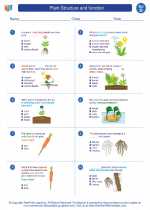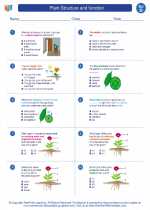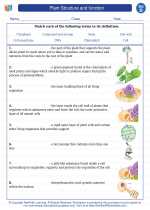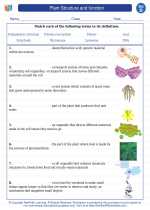Plant Structure and function -> viruses
VIRUSES
Viruses are microscopic infectious agents that can only replicate inside the cells of living organisms. They are much smaller than bacteria and can infect a wide variety of life forms, including animals, plants, and even bacteria.
Structure of Viruses
Viruses are composed of a nucleic acid core, which can be either DNA or RNA, surrounded by a protein coat called a capsid. Some viruses also have an outer lipid envelope. The capsid and envelope provide protection for the viral genetic material and help the virus to infect host cells.
Reproduction and Life Cycle
Viruses cannot reproduce on their own and must infect a host cell to replicate. The virus attaches to the host cell and injects its genetic material into the cell. Once inside, the viral genetic material takes over the host cell's machinery to produce new virus particles. These particles can then infect other cells and continue the cycle.
Effects on Host Organisms
Viruses can cause a wide range of effects on their host organisms, from mild illnesses like the common cold to more severe diseases like AIDS, Ebola, and COVID-19. Some viruses can also cause diseases in plants and animals, leading to significant economic and ecological impacts.
Prevention and Control
Preventing viral infections involves measures such as vaccination, good hygiene practices, and quarantine. Antiviral medications can also be used to treat some viral infections, although in many cases, the best defense is a strong immune system.
Study Guide
- What is the structure of a virus and how does it differ from that of a bacterium?
- Explain the process by which viruses replicate inside a host cell.
- Give examples of viral diseases and their effects on the host organisms.
- What are some preventive measures and treatments for viral infections?
- Discuss the impact of viruses on human health and the environment.
[Viruses] Related Worksheets and Study Guides:
.◂Science Worksheets and Study Guides Fourth Grade. Plant Structure and function

 Worksheet/Answer key
Worksheet/Answer key
 Worksheet/Answer key
Worksheet/Answer key
 Worksheet/Answer key
Worksheet/Answer key
 Vocabulary/Answer key
Vocabulary/Answer key
 Vocabulary/Answer key
Vocabulary/Answer key
 Vocabulary/Answer key
Vocabulary/Answer key
 Vocabulary/Answer key
Vocabulary/Answer key
